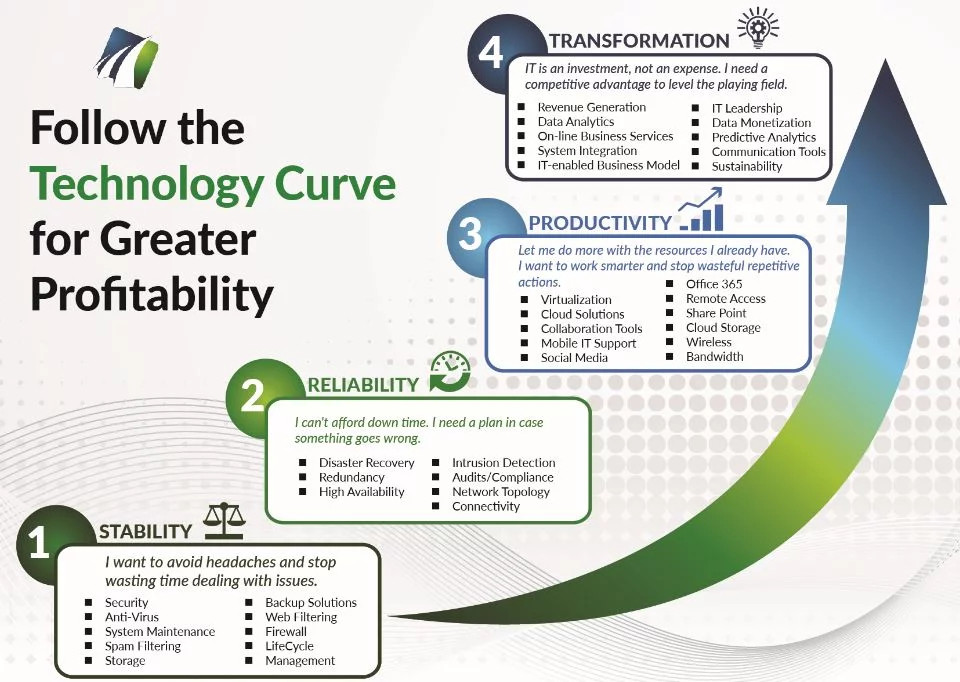A Simple Story Of Why Cloud Computing Works
Not too long ago, before Cloud Computing, the workday was a by-the-numbers affair. You show up around 8:30-9am you head home at 5-5:30pm. Everybody worked at the office. This was the ho-hum that the infrastructure of the average workplace demanded in order to keep everyone working at peak efficiency.
An average workday now is near impossible to generalize. We have people working longer hours, people working off-hours and people working from all manner of locations. Add to this that just a few years back, the average full time working adult spends 47 hours a week working.
So naturally, the question becomes: Do people have more work or are they less productive?
Well, maybe a bit of both.
Just because you’ve lengthened the average workday, does not mean you’re accomplishing more (check out the Paradox of Workplace Productivity for more insight). Which changes the question entirely: How do we get the most out of our longer workdays?
Well, it’s probably not by being in the office for 100% of your
work hours.
Increasing your workforces’ efficiency is done by tackling two
problems: mobility and flexibility.
Luckily, cloud computing is the solution to both problems.
The Big Reason Why
Part 1 — The Workarounds
With the cloud, working from home with the same applications and data you have access to at work is a possibility. And that’s a big deal.
Here’s a common scenario to display why:
You have an important project due tomorrow, but it’s already close to 6:00pm and you still have a lot more work to go. And, unfortunately, your home life is impatiently waiting for you. That means
you’re bringing your work home with you.
The problem is, you can’t exactly take your desktop computer home with you. There’s your laptop, but you haven’t updated Windows to the latest version and it doesn’t have the files you’ve been working on.
This is an excerpt from the White Paper. Download the PDF to read the rest.


